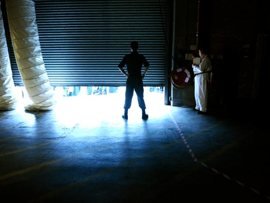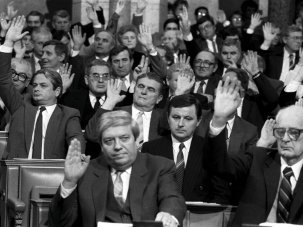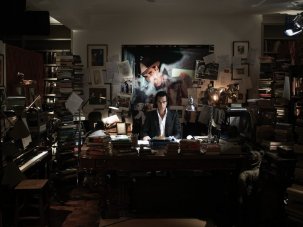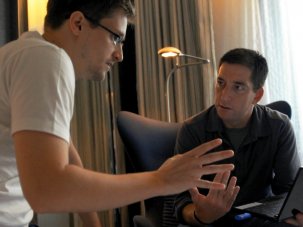Web exclusive
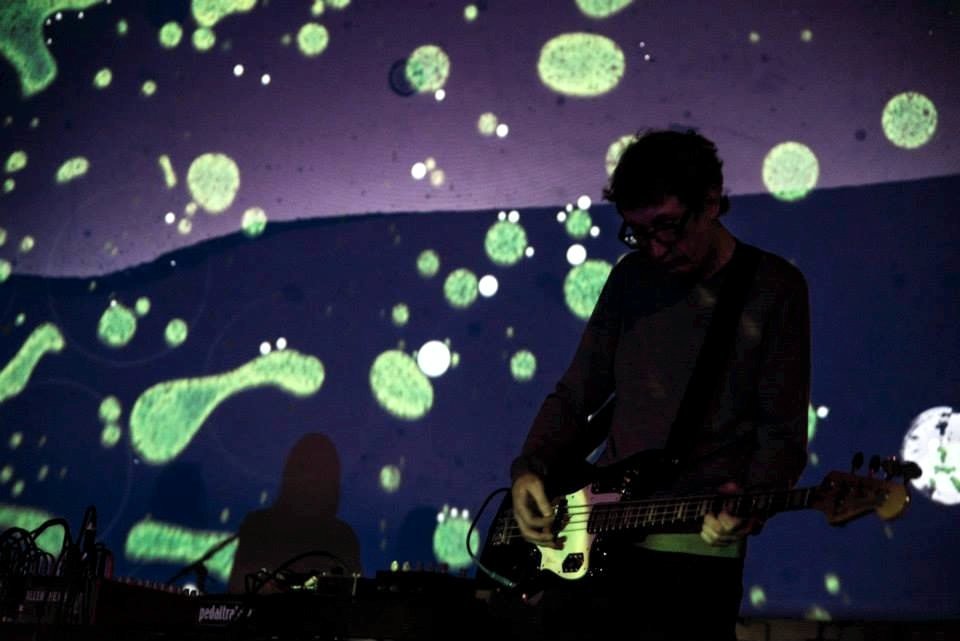
Future 3 vs. Peter Leander, one of many AUDIO:VISUALS events at CPH:DOX 2014.
Cinema’s traditional delineations are coming unstuck, and nowhere is this shift more plainly evident than at CPH:DOX – the enfant terrible of the international documentary circuit, held every November in Copenhagen. For one thing, the festival is founded on a wilfully broad definition of documentary: in 2009, the event’s top prize was awarded to Harmony Korine’s Trash Humpers, shown elsewhere as a narrative project; in recent years, the festival’s funding forum has explicitly sought “challenging works in the hybrid landscape between fiction and nonfiction”; and this year’s lineup includes such scripted films as John Ridley’s critically ignored Hendrix biopic All Is By My Side and Abel Ferrara’s mischievous rehashing of the Strauss-Kahn affair Welcome to New York.
When the festival began in 2003, this kind of formal adventurousness was rare in documentary. The field had been largely co-opted by a certain self-righteous strain of advocacy filmmaking, and documentaries that held aesthetics in equal or greater regard to content were given short shrift. Now though, as films like The Look of Silence and 20,000 Days on Earth hoover up documentary awards around the globe, and think pieces on the nature of reality in nonfiction filmmaking gush ceaselessly from broadsheet arts supplements, blending fact and fiction has become practically de rigueur in documentary. Unwilling to be consumed by the orthodoxy, CPH:DOX has shifted its attentions to an even greater challenge: dismantling the demarcations of film itself.
This year, the festival’s twelfth edition showcased more than 100 so-called feature films, ranging in length from less than one hour to more than four. Some were made for television; others will be screened primarily in a gallery context; one was accompanied by a six-hour excursion into the Danish countryside. Such idiosyncrasies rendered futile any attempt to decipher the festival’s eligibility criteria. The CPH:DOX website offers a scant few guidelines for entry, and even these are often followed up by caveats reserving the right of the programmers to disregard the rules entirely. As far as I can tell, the festival’s selection process is self-actualising: if they play it, it must therefore be eligible.
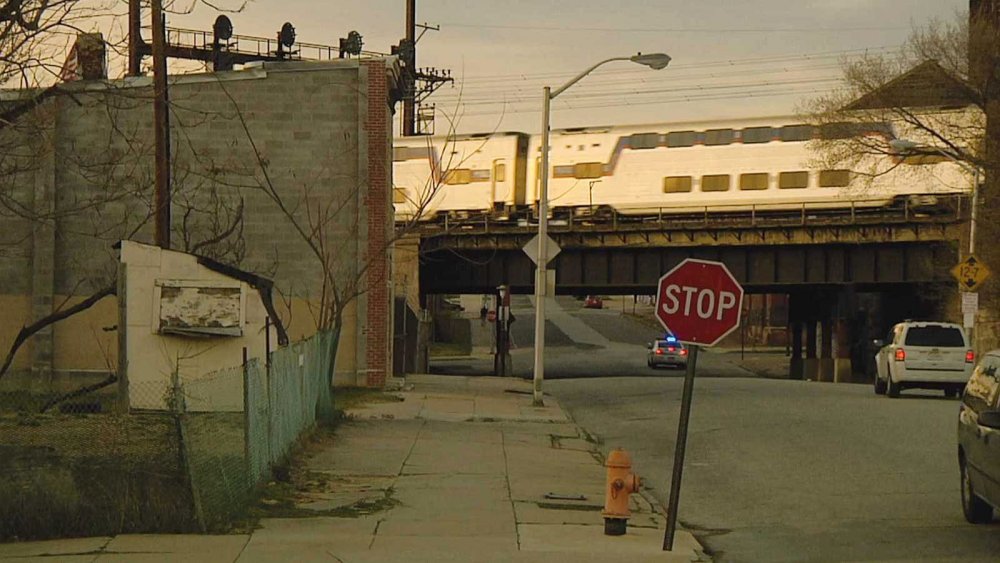
Baltimore, Where You At? (2014)
Even relatively self-contained films got blurrier at this year’s CPH:DOX, usually in the name of context. Laura Poitras’s coolly monumental Edward Snowden documentary Citizenfour was accompanied by a talk from William Binney, one of the whisteblowers who appears in the film. If the discussion (which featured near-constant sideline heckling from rival surveillance expert Jacob Appelbaum) came off as a little inside-baseball, it nonetheless enhanced the feeling of creeping uncertainty that pervades Poitras’s film.
Elsewhere, multi-instrumentalist Merrill Garbus, a.k.a. tUnE-yArDs, brought an atmosphere of manic enthusiasm to a programme of short films about music subcultures. The films that screened that night – French director Tim Moreau’s stranger-in-a-strange-land portrait of the Baltimore club scene Baltimore, Where You At? and Scott Cumming’s hypnotic non-verbal ode to Insane Clown Posse fandom Buffalo Juggalos – might have borne only loose thematic ties, but Garbus’s expansive worldbeat showcase made them feel like long-lost twins, finally reunited by a 35-year-old New England percussionist.
Such inroads into the arena of live music place CPH:DOX at the careering forefront of film exhibition. Acts including Blue Hawaii, How To Dress Well and Iceage all descended upon the festival during its 11-day run, often scheduled alongside films at events that were neither gigs nor screenings but contained unmistakable elements of both.
CPH:DOX Iceage vs. Christian Friedländer
The most established cross-disciplinary screening model, the live score, was meanwhile represented – at least indirectly – by me. My directorial debut Beyond Clueless, an essay film about teen cinema, played in its resting state as part of the festival’s main programme, but it was also shown on the final night of CPH:DOX with a live accompaniment by the band Summer Camp, who wrote the film’s score.
There’s no denying that the rise of the live score is, at least on some level, financially motivated. Just as Secret Cinema can sell 80,000 tickets to a repertory screening of Back to the Future as long as they embellish it with elaborate set design and amateur theatrics, so too can cinemas attract a paying audience for films located far beyond the mainstream by pairing them with live musical performances. The UK premiere of Beyond Clueless at Sheffield Doc/Fest attracted an audience of around 90 people; a live-scored screening the following day drew 500.
On the one hand, this is great news for filmmakers – in the last six months alone, second-run titles like Under the Skin, There Will Be Blood and Beasts of the Southern Wild have played to 1,000-strong London crowds with the aid of a live score – but it also throws into question what exactly audiences want from a cinematic experience in 2014. If a viewer can only be tempted away from their Netflix subscription by the promise of a live score, or a theatrical experience, then of what significance is the film at the centre of it all? Audiences who attended Secret Cinema’s recent production of Brazil reported adverse screening conditions that left them without a clear view of the film, or an awareness that it had even begun. For some, it was a sign that Secret Cinema’s ‘all for the love of movies’ shtick was little more than a marketing angle; for others, it was an appropriately Orwellian extension of Gilliam’s bureaucratic dystopia.
There’s no question that adding a second focal point to an event does risk dividing an audience’s attention. The closing night party at CPH:DOX, hosted by Dazed & Confused, featured a pop-up cinema showing episodes of the magazine’s Music Nation documentary series. With the next room boasting a DJ set from Mike Skinner, however, the screening space was almost entirely ignored.
CPH:DOX x Soundvenue x Dazed : Final Party
This problem rears its head even when both elements of an event are working in synchronicity, at they do at a live score. Where, after all, should the performers of a live score stand in relation to the film that they’re scoring? Front and centre, they risk obscuring large swathes of the screen. Off to the side, they’re liable to upset the symmetrical balance of the film. Beyond that, there’s the minutiae of the performance itself: I’ve had multiple conversations with Elizabeth Sankey, Summer Camp’s lead singer, about the ideal facial expression to be worn during a live score (halfway between the heightened emotion of a gig and the studied concentration of a studio session, we’ve decided).
It’s a formula we have yet to perfect. At Sheffield Doc/Fest, Sight & Sound’s Nick Bradshaw admitted to “feeling slightly crusty in wanting to complain that I couldn’t hear all the words under the sounds of the gig” during our inaugural Beyond Clueless live score. We’ve since refined the audio balance, but other niggles remain. Try as we might, we’ve yet to find a way to cue the musicians in for the beginning of the closing credits without disrupting the silence that immediately precedes them. And lighting the band so as not to affect the quality of the projection is a fresh challenge at each new venue. In Copenhagen’s Falkoner Biografen, it initially seemed as though Summer Camp might be forced to play with the house lights up, until – five minutes before the scheduled start time – a ladder was found and a spotlight turned on.
The live score at CPH:DOX went well, thanks in large part to the enthusiasm of a primarily local crowd. I suspect there are only a few places in the world that can sell out a Sunday-night screening of an experimental documentary live score, but Copenhagen is apparently one of them.
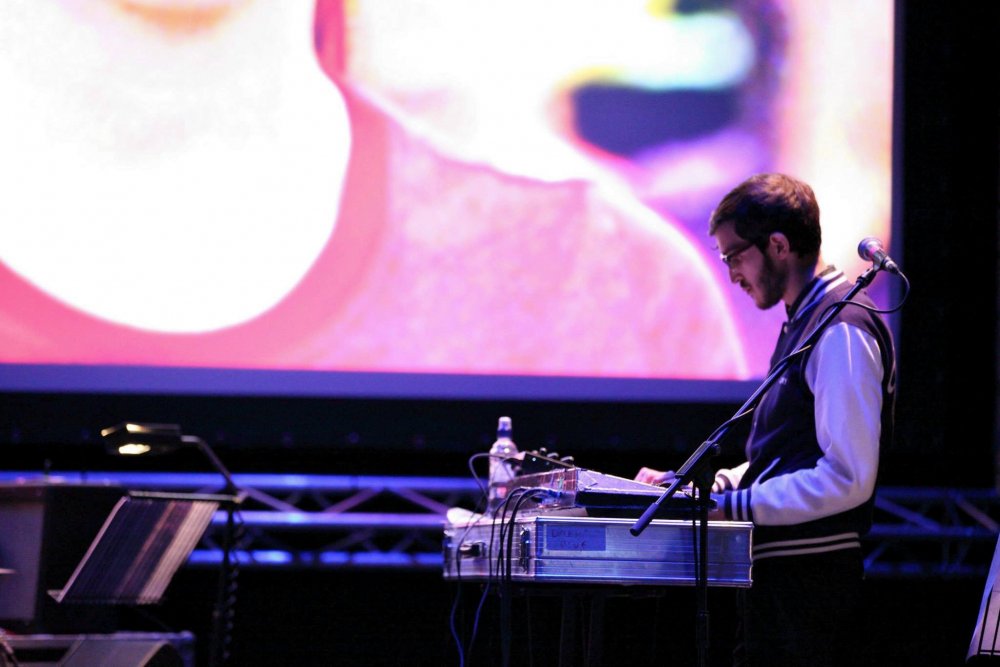
Summer Camp playing a live soundtrack to Beyond Clueless (2014) at the Sheffield Crucible
The crowd’s warm reception made me yearn to stage each and every performance of Beyond Clueless as a live score. After all, if the film is indeed superior with a live musical accompaniment, don’t I owe it to the world to push this option to audiences as firmly as possible, just as Quentin Tarantino vaunts the 35mm viewing experience and Ridley Scott endorses a cut of Blade Runner made 25 years after its release? These directors clearly believe there’s a ‘right way’ to enjoy their films – shouldn’t I?
I got my answer not at CPH:DOX but on the day of my return to London, when I attended a singalong screening of last year’s globe-straddling Disney megahit Frozen at the Royal Albert Hall. As I sat among some 3,000 toddlers, all screaming the lyrics to Let It Go at the top of their tiny lungs, all became clear. To them, this version of the film – with its on-screen lyrics and bouncing snowflake guiding them through each musical number – was no more or less authentic than the version on their older sibling’s iPad, or the soundtrack CD in their parents’ car stereo. It was simply an extension of a film with flexible limits and no definite shape.
As the boundaries of film are pushed and pulled by artistic and economic forces, the monolithic view of cinema as something to be consumed in a particular way and in a particular space must be consigned to history. At CPH:DOX, I saw one of the year’s best documentaries – Jesse Moss’s devastating tale of economic turmoil The Overnighters – not in one of the festival’s countless lavish movie theatres, but on my phone, in a hotel lobby, waiting to check in. It might not be what Moss had in mind when he made the film, but that hardly matters. The age of cinematic dogma is over, and film is whatever we make of it.
-
The Digital Edition and Archive quick link
Log in here to your digital edition and archive subscription, take a look at the packages on offer and buy a subscription.





